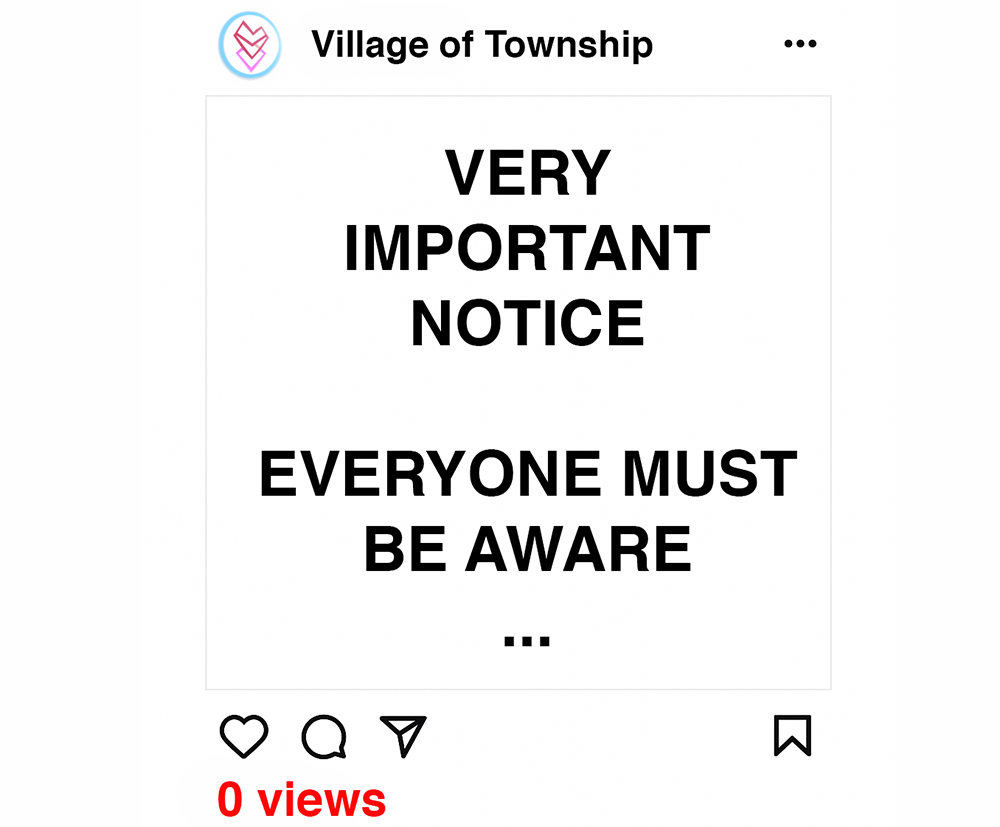In the eight years since the former NDP government changed rules governing Alberta’s municipalities, newspaper publishers say they’ve seen a once stable revenue stream evaporate and relationships with local governments become more politicized.
The Municipal Government Act (MGA) requires municipalities to advertise certain proposed bylaws, resolutions, public hearings and other government business. The act previously specified public notices be placed in newspapers as paid advertisements or delivered directly to residents, but it was amended in 2017 to allow municipalities to write bylaws authorizing the use of alternatives like social media and online advertising.
“Once the MGA changed and councils could advertise online or through their own channels, many of us lost that income almost overnight. Now that money often goes to Facebook or Google instead of staying in the community,” said Lisa Sygutek, publisher of the Crowsnest Pass Herald and Alberta Weekly Newspaper Association president.
Alberta has lost a total of 52 community newspapers since 2008, according to data from the Local News Research Project, including 30 that have closed since 2018. Many of these closures follow a broader collapse of advertising revenue for community newspapers in Canada, which fell 44 per cent between 2018 and 2022.
The disappearance of public notices on its own might not be a death sentence for a newspaper, but it is another blow for an already struggling industry, said Tyler Nagel, a journalism instructor at the Southern Alberta Institute of Technology.
“The government as a source of revenue for newspapers by way of advertising goes way back. I think that the changes to the Municipal Government Act definitely exacerbate the situation,” Nagel said. “Local newspapers are already hanging by a thread.”
As early as 1908, the Edmonton city charter mandated that certain public notices be published for three successive weeks in a city newspaper, and this stipulation was written into the original MGA in 1968.
Researchers have called required public notice spending a type of “silent subsidy” that has helped sustain newspapers and legitimized them as official sources of civic information.
When these civic notices stop appearing in the newspaper, readership declines as well, “and that hurts subscriptions, ad sales, everything,” Sygutek said.
“It sends a message that local journalism isn’t necessary anymore, and that’s dangerous for small towns like ours.”
The Albertan publisher Murray Elliott said his concern with the proliferation of new municipal ad bylaws since 2017 is that it allows local governments to “bypass” his paper and other media for the sake of expediency.
In December, Olds town council passed its own ad bylaw, the latest of several communities served by the Albertan to do so. Though the current administration has promised to maintain its spending with the paper, Elliott said he’s aware of how quickly that could change.
“I’m worried that when they don’t like us, then they have that option,” he said. “They can lead with emotion, and they can pull the newspaper.”
Sygutek said she experienced this kind of backlash in the early 2010s, when Crowsnest Pass town council “pulled nearly all their advertising” in response to stories her paper published. The previous statutory notice requirements in the MGA prevented council from cutting its funding to the paper completely, but she said now that those minimal “safeguards” have been removed, publishers feel like they’re walking a fine line in their reporting.
“If you push too hard or publish something council doesn’t like, you risk losing what little advertising support is left. That pressure challenges the very foundation of what local journalism is supposed to stand for,” Sygutek said.
During his research on local news, Nagel said he’s heard similar stories from other publishers of current newspapers, though they have elected to not make these disputes public. When councils have a choice about whether to continue funding local media or not, “things have the potential to become politicized,” he said.
The extent to which a municipal administration can take punitive action and defund local media also depends on the language of the advertising bylaw. While governments must fulfill certain legal obligations to notify the public, how this is achieved is left up to individual municipalities.
Some bylaws, like those introduced by Airdrie and St. Paul, maintain requirements to place notices in the local paper but add other options like digital ads.
Far more municipalities however, including Edmonton, Innisfail, Cold Lake and Cochrane, have opted to remove print media as a required method for public notices altogether.
Edmonton’s shift to online advertising has also marked the end of its long-standing arrangement with the Edmonton Journal and Postmedia. For over 20 years, the city maintained a sole-source advertising contract with the network valued at about $1 million per year, and legally required ads from the city accounted for over two-thirds of Edmonton’s ad spending with the Journal. A spokesperson for the city confirmed the contract hadn’t been renewed after expiring at the end of 2024.
“It is our expectation that municipalities establish these bylaws with the needs of their community top of mind so they can ensure that their residents are aware of the public notices that they publish,” Ministry of Municipal Affairs press secretary Kevin Lee said in an email.
Brett McKay,
Local Journalism Initiative Reporter
Investigative Journalism Foundation

